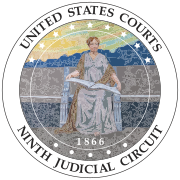| Lewis Galoob Toys, Inc. v. Nintendo of America, Inc. | |
|---|---|
 | |
| Court | United States Court of Appeals for the Ninth Circuit |
| Full case name | Lewis Galoob Toys, Inc. v. Nintendo of America, Inc. |
| Decided | May 21, 1992 |
| Citation(s) | 964 F.2d 965 |
| Case history | |
| Prior action(s) | 780 F. Supp. 1283 (N.D. Cal. 1991) (granting judgment for Galoob following two-week bench trial) |
| Subsequent action(s) | cert. denied, 507 U.S. 985, 113 S. Ct. 1582, 123 L. Ed. 2d 149 (1993) |
| Court membership | |
| Judge(s) sitting | Jerome Farris, Pamela Ann Rymer, and David V. Kenyon |
| Case opinions | |
| manufacturer of product that allowed users to alter codes transmitted between video gaming console and game cartridge did not infringe console manufacturer’s exclusive right, under federal copyright law, to create derivative works | |
Lewis Galoob Toys, Inc. v. Nintendo of America, Inc. is a 1992 legal case where the United States Court of Appeals for the Ninth Circuit concluded that there was no copyright infringement made by the Game Genie, a video game accessory that could alter the output of games for the Nintendo Entertainment System. The court determined that Galoob's Game Genie did not violate Nintendo's exclusive right to make derivative works of their games, because the Game Genie did not create a new permanent work. The court also found that the alterations produced by the Game Genie qualified as non-commercial fair use, and none of the alterations were supplanting demand for Nintendo's games.
UK video game developer Codemasters created the Game Genie to capitalize on the success of the Nintendo Entertainment System, reverse engineering the hardware to produce a device that could attach to Nintendo game cartridges. Knowing that Nintendo did not authorize this, Galoob pre-emptively sued Nintendo in May 1990 to prevent them from blocking sales of the Game Genie, and Nintendo responded by suing for a preliminary injunction. Although the courts enjoined the Game Genie from being sold, Galoob ultimately succeeded when the case went to trial, also winning $15 million in damages. Nintendo tried to appeal the decision, but was unsuccessful.
The Game Genie sold millions of units, and the product line was extended with versions for other consoles. The case was cited in another copyright dispute from the same time, with Sega v. Accolade (1992) further establishing that reverse engineering is fair use. The case has also been cited for establishing the rights of users to modify copyrighted works for their own use. However, the holding was distinguished by courts in Micro Star v. FormGen Inc. (1998), finding copyright infringement when making permanent modifications and distributing them to the public.
